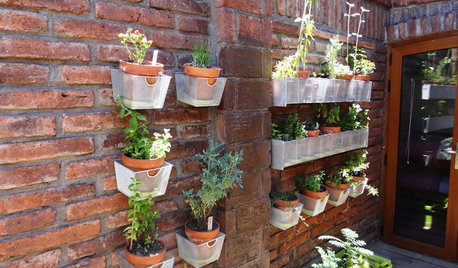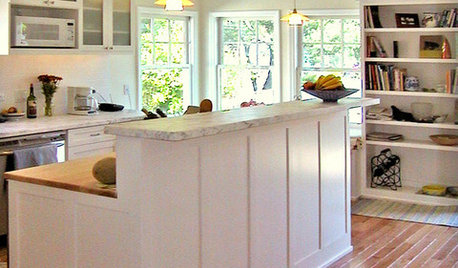Non Rotating Tomatoes
jimla
17 years ago
Related Stories

EDIBLE GARDENSSummer Crops: How to Grow Tomatoes
Plant tomato seedlings in spring for one of the best tastes of summer, fresh from your backyard
Full Story
STORAGEWatch an Innovative Bookcase Convert Before Your Eyes
Judge the problem-solving ability of these rotating shelves for yourself, but we think it’s an open-and-shut case
Full Story
KITCHEN DESIGNKitchen Storage Solutions for Every Nook
No kitchen spot is too small to use wisely with corner drawers, rotating shelves, Lazy Susans and more
Full Story
FARM YOUR YARDHow to Build a Raised Bed for Your Veggies and Plants
Whether you’re farming your parking strip or beautifying your backyard, a planting box you make yourself can come in mighty handy
Full Story
EDIBLE GARDENSHouzz Call: Where Are the Craziest Places You Grow Edibles?
Basil in a bathtub, spinach stacked up a wall ... If your edibles occupy an odd spot, we’d like to know
Full Story
KITCHEN DESIGN12 Farmhouse Touches That Bring Homeyness to a Kitchen
Shaker cabinetry, country-store-inspired hardware, barn elements or a key piece of art will add homestead appeal to your kitchen
Full Story
FARM YOUR YARD6 Things to Know Before You Start Growing Your Own Food
It takes time and practice, but growing edibles in the suburbs or city is possible with smart prep and patience
Full Story
CALIFORNIA GARDENINGCalifornia Gardener's July Checklist
Bite into tree-fresh apricots, inhale delightful garden perfumes and continue planting vegetables for a late-summer harvest
Full Story
KITCHEN DESIGN8 Kitchen Organizing Ideas for Messy Cooks
Not the clean-as-you-go type? Not to worry. These strategies will help keep your kitchen looking tidy no matter what your cooking style is
Full Story
DECORATING GUIDES10 Inspired Ways to Refresh Your Mantel Now
Postholiday blahs don't stand a chance on your mantel when you incorporate these ways to accessorize and light it
Full StoryMore Discussions







Heathen1
patty4150
Related Professionals
Camas Landscape Architects & Landscape Designers · Essex Landscape Architects & Landscape Designers · Oconomowoc Landscape Architects & Landscape Designers · Barrington Landscape Contractors · Bound Brook Landscape Contractors · Deer Park Landscape Contractors · Forest Hills Landscape Contractors · Fort Atkinson Landscape Contractors · Lakeville Landscape Contractors · Northbridge Landscape Contractors · Wallingford Landscape Contractors · West Coon Rapids Landscape Contractors · Dracut Decks, Patios & Outdoor Enclosures · Lakewood Decks, Patios & Outdoor Enclosures · Glendale Decks, Patios & Outdoor Enclosuresgamebird
led_zep_rules
Kimmsr
yugoslava
Kimmsr
Heathen1
BobdaGardner
Kimmsr